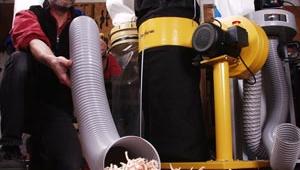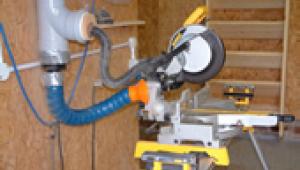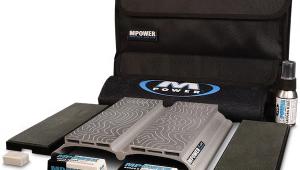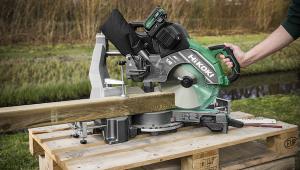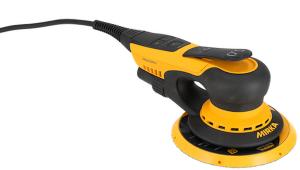Types of dust extractor
1. The chip extractor has a centrifugal fan which draws a large volume of air along the inlet pipe, past the fan blades and into a collection bag. This produces a high volume, low pressure airflow and its performance rapidly reduces if used with pipes or ducting smaller than 100mm. Also the filter has to be relatively coarse or it will reduce the air flow too much. Fine mesh bags and large paper filters are available for some machines but, although they do filter finer particles, they also reduce the air flow.
2. Fine filter extractors work on the same principle as domestic vacuum cleaners. They work at a much higher pressure than chip extractors and can therefore utilise a finer filter to filter out very much smaller particles. Because of the higher pressure they can also be used with power tools with relatively narrow hoses. The big disadvantage of this type of extractor is that it draws a very much lower volume of air.
Typical airflow for rates for chip and fine dust extractors:
| Type | Power | Airflow |
| Chip | 0.56kW | 1100m3/hr ~ 305l/sec |
| Chip | 1.12kW | 2200m3/hr ~ 601l/sec |
| Fine | 0.8kW | 195m3/hr ~ 54l/sec |
| Fine | 1.6kW | 309m3/hr ~ 108l/sec |
Neither of these types of machine is ideal, it would be great if the best features of each machine could be incorporated into one affordable machine, but at the moment that does not seem likely.
If you have a small to medium sized workshop and want a universal extraction system which will work for all your machinery and tools then a vacuum extractor will probably offer you the best solution.
In my opinion chip extractors are a good choice if you have a particularly large planer/thicknesser and need the airflow to move the chips produced. If you can mount it outside the workshop, in say a lean-to shed, the poorer filtration performance would not be a problem. Site it somewhere where the noise will not annoy the neighbours, and then use a small vacuum extractor for power tools etc. Unfortunately this does create another problem, even small chip extractors move large volumes of air. Calculate the volume of your workshop, and then you can work out just how quickly it will expel all the nice warm air in the winter.
Workshop vacuum cleaners
For the small workshop, without any machinery, a vacuum cleaner could handle the amount of dust produced. It is best to use a vacuum cleaner specifically designed for the purpose, domestic vacuum cleaners are not designed to cope with lots of fine dust and the bag or filter will soon block up. The cyclone types too usually have a warning in the instructions which says unsuitable for fine dust.There is a very wide selection from about £35 upwards. I have an Earlex, which can also be bought from Wickes under their own brand name. It cost £35, and with the addition of the optional washable filter is quite capable of handling the dust from most power tools. If you want to spend more then you can get more sturdy machines with bigger drums.
Also available are power tool extractors, which have a mains socket on the cleaner into which the power tool is plugged. As the tool is turned on the vacuum comes on automatically, when the tool is turned off the vacuum continues to run for a few seconds to clear the hose, which is very convenient; this type of extractor starts at about £100.
- Log in or register to post comments
